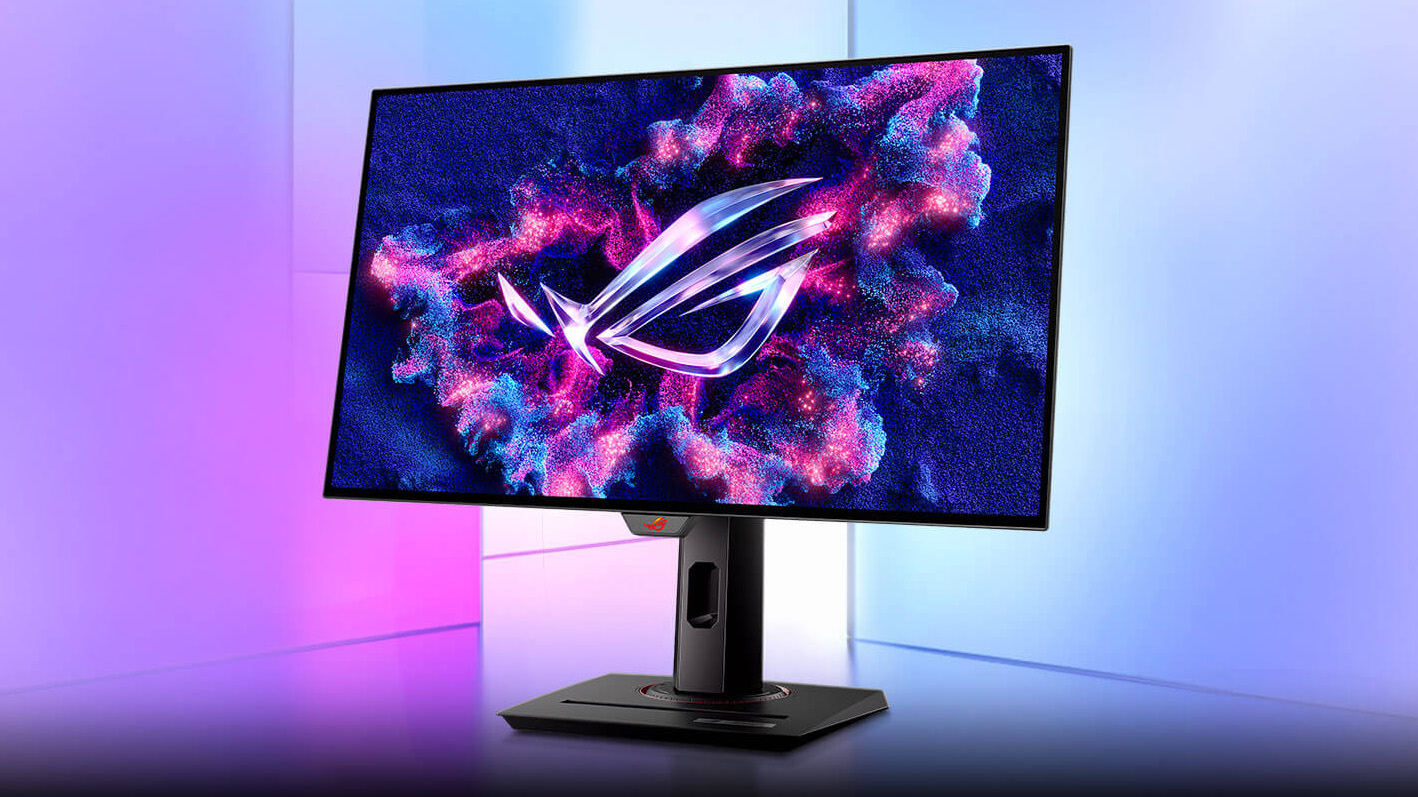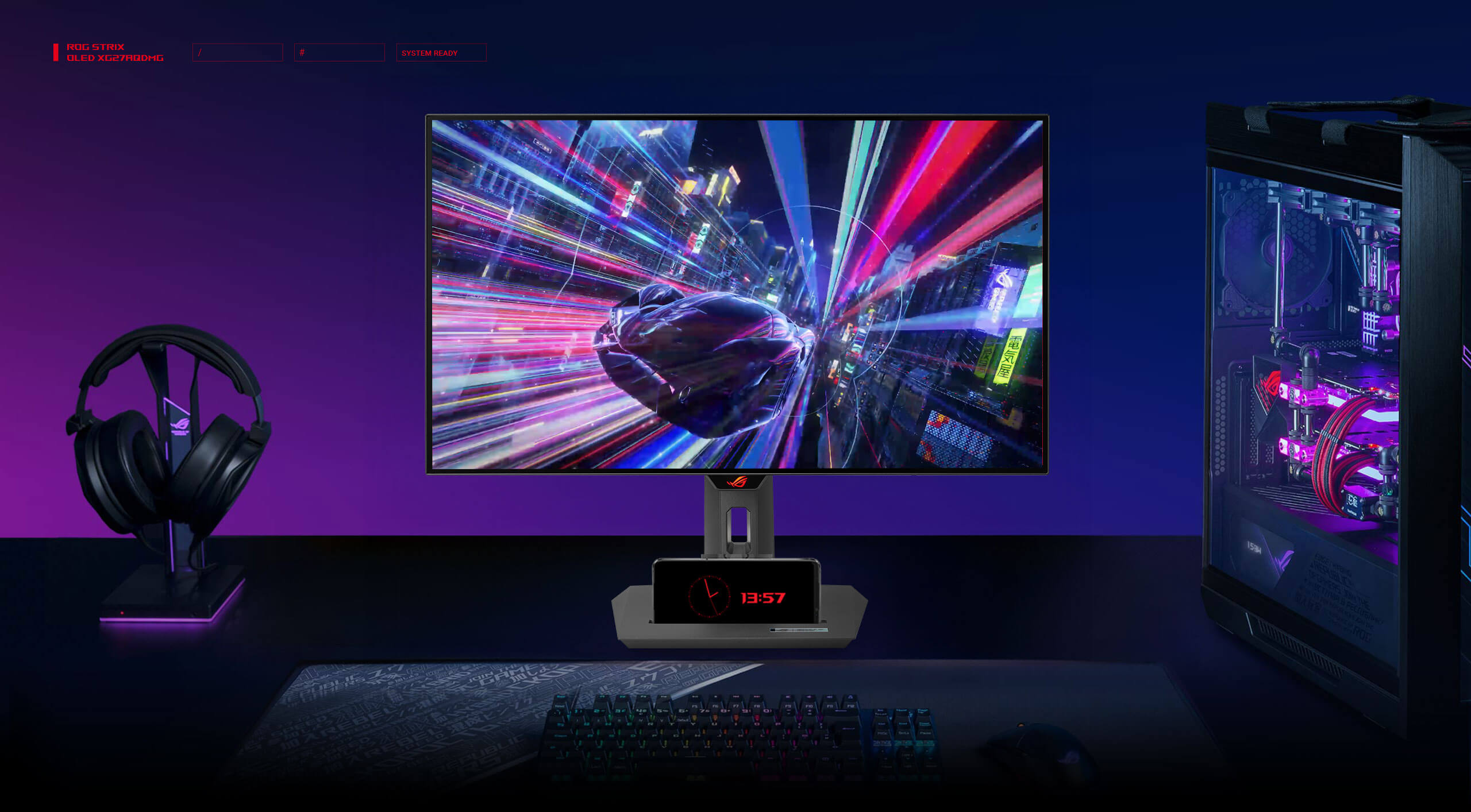
Asus is introducing a new ROG OLED gaming monitor to the market, dubbed the XG27AQDMG. Desgined to compete with the best gaming monitors on the market, the new display comes in a 27-inch form factor featuring a 3rd Gen LG WOLED panel with a 1440P resolution and 240Hz refresh rate. Two major highlights of the new display are its capability to display a flicker-free VRR gaming experience and ELMB support — making it the first OLED panel to support two of these features. Pricing and availability are unknown at this time.
No other OLED monitor currently supports flicker-free variable refresh rate or ELMB support. Previously, if you wanted both of these capabilities, you needed to go with a high-refresh IPS gaming monitor.
Asus has somehow figured out a way to integrate both features into LG's 3rd generation WOLED display panel. Asus calls its flicker-free tech "OLED Anti-Flicker," which helps eliminate brightness fluctuations that occur when the display changes refresh rates abruptly in VRR mode. ELMB stands for Extreme Low Motion Blur technology and utilizes black frame insertion to reduce perceived motion blur on screen.

The XG27AQDMG is also the world's first WOLED gaming monitor with a glossy panel coating, improving the display's visual clarity in the right environment. In the past, if you wanted a glossy screen, you were forced to buy a monitor with Samsung's competing QD-OLED technology. Now, LG's competing WOLED tech is available in a glossy format, but only with Asus's new ROG screen for the time being. All other WOLED panels are only available with anti-glare matte or semi-glossy coatings.
Asus is utilizing LG's latest third-generation WOLED technology in the XG27AQDMG. LG's third-generation tech benefits from a Micro Lens Array, meta multi-booster, and Detail Enhancer. LG's Micro Lens Array is the main attribute of 3rd Gen WOLED which reduces the amount of light lost inside of the panel, boosting light production efficiency. This is a big deal since LG's WOLED tech relies on a dedicated white subpixel to display white colors, which was very power inefficient in previous generation WOLED displays due to the color filter blocking a lot of the white subpixel's light output.
With all of these three technologies, 3rd Gen WOLED has peak brightness capabilities of up to 3,000 nits and color brightness of up to 1,500 nits. That said, these are the maximum capabilities of the LG panel itself. In monitor format, LG's panel is limited to a maximum brightness of well under 1,000 nits to increase longevity.
Other specs include a 0.03ms response time indicative of all OLED monitors, Display HDR 400 True Black certification, a 3-year warranty, 99% DCI-P3 coverage, a uniform brightness mode, a special text clarity algorithm dubbed "Clear Pixel Edge," and a custom heatsink that helps cool the OLED panel to lengthen its longevity.
For gamers, Asus has also incorporated a special 4:3 aspect ratio mode that runs the monitor in a non-widescreen resolution for competitive gamers who don't want to be distracted by their peripheral vision. Like Asus's other ROG monitors, the XG27AQDMG comes with a very capable stand featuring 0-120mm height adjustment, a 45-degree swivel, a 20-degree tilt, and a 90-degree pivot for vertical use.
I/O consists of one DisplayPort 1.4 port, dual HDMI 2.0 ports, a headphone jack, and a USB hub featuring two USB 3.2 Gen 1 Type-A ports. Display stream compression (DSC) is required to run the monitor at its native resolution and refresh rate through DisplayPort. However, DSC is not required when using the display's higher bandwidth HDMI 2.0 ports.
Asus hasn't announced pricing or availability, but we expect this monitor to be well into the $800-$1000 range, like most 1440P OLED gaming monitors.







